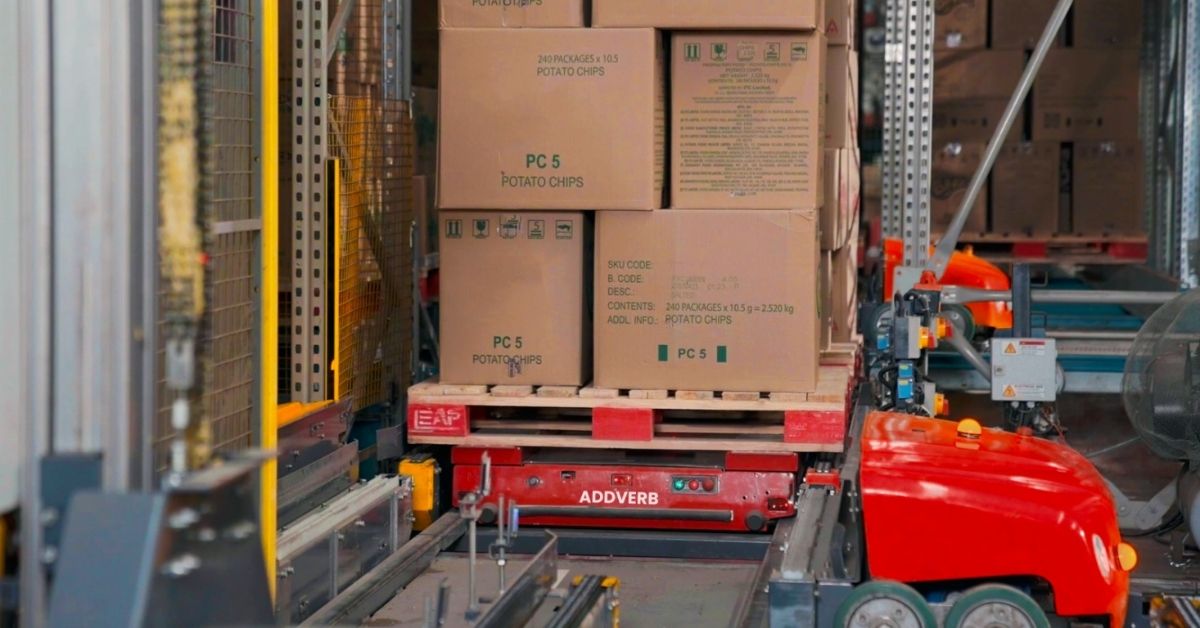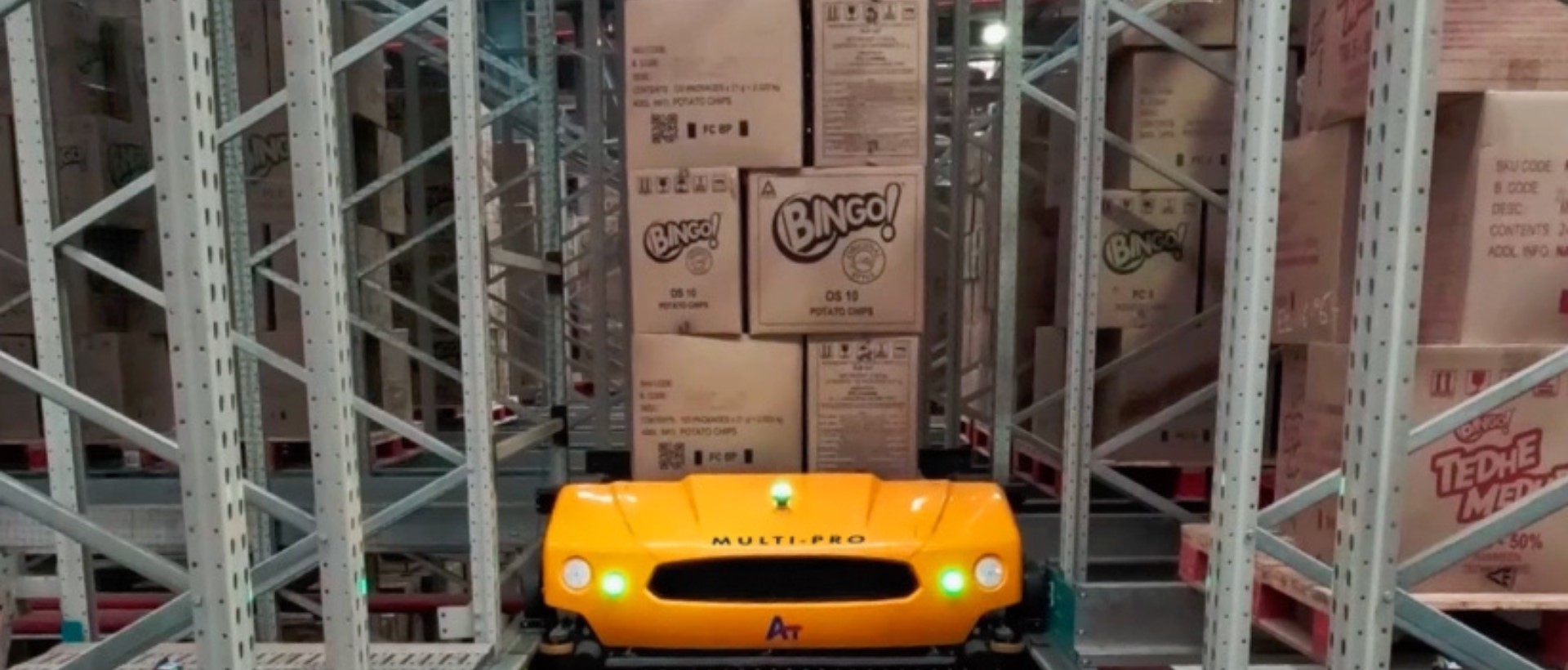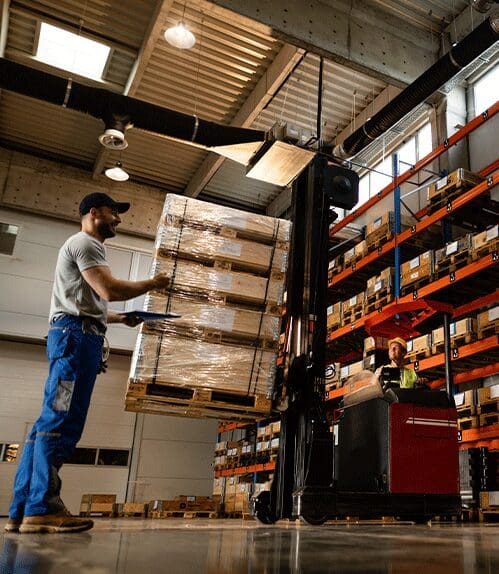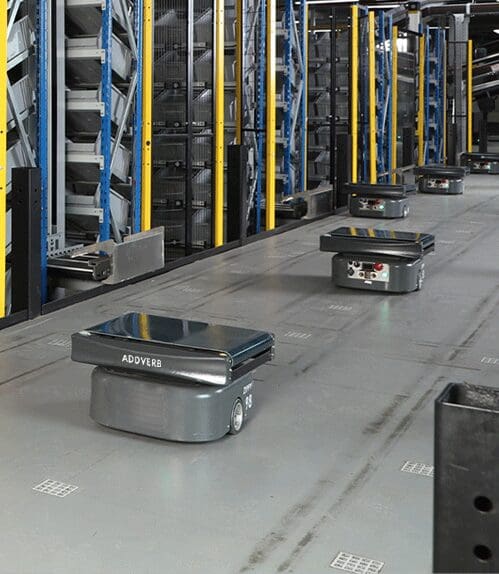Table of Contents
The food and beverage industry stands at the forefront of a transformative wave powered by robotics in an age where technology continuously reshapes our world. Robotics is revolutionizing every facet of food production, preparation, and service, enhancing food safety and optimizing efficiency.
Automation in the food and beverage industry has become a popular trend that uses robotics, smart devices, analytics, artificial intelligence, the Internet of Things (IoT), data processing, and 3D printing to make food processing more innovative and productive.
Here’s a deep dive into how robotics is making its mark on the food and beverage industry.
Watch the video to discover how Addverb’s automated warehouse robots is revolutionizing the beverage industry.
Applications of Automation in the Food & Beverage Industry
Automated Food Processing
Automation in food and beverage industry processing involves the use of machines and robots to handle tasks such as slicing, dicing, mixing, and cooking. These processes benefit significantly from automation due to machines’ precision and speed.
Sorting and Grading
Sorting and grading are crucial steps in ensuring that only the best quality products reach consumers. Automated systems use various technologies to sort and grade food items based on size, color, weight, and other parameters.
Packaging and Labeling
Automation in packaging and labeling involves using machines to pack products into containers, seal them, and apply labels. This process ensures high speed, accuracy, and hygiene, crucial for maintaining product quality and meeting regulatory standards.
Food Safety and Quality Control
Automation in food and beverage industry ensures safety and quality control by integrating advanced sensors, cameras, and software to monitor and inspect products throughout the production process.
Inventory Management and Supply Chain Optimization
Automated systems in inventory management and supply chain optimization ensure efficient handling, storage, and transportation of food products. These systems help reduce waste, lower costs, and improve overall efficiency.
Advanced Cleaning and Sanitation
Automation in cleaning and sanitation ensures that food production environments remain hygienic, reducing the risk of contamination and foodborne illnesses.

MultiPro is revolutionizing the food industry through cutting-edge automation solutions.
Benefits of Automation in the Food and Beverage Industry
Improved Efficiency and Productivity
Automation increases production rates by operating continuously without breaks, reduces labor costs, and ensures consistent product quality by minimizing human error.
Enhanced Food Safety and Quality Control
By reducing human contact with food and beverage products, automation lowers contamination risks and improves hygiene standards. It also ensures products meet quality standards consistently through real-time monitoring and adjustments.
Traceability and Compliance
Automation enhances ingredient and product tracking, crucial for recalls and safety compliance, while maintaining accurate records for regulatory adherence.
Cost Savings
Automation reduces waste through precise ingredient usage and incorporates energy-saving technologies, lowering utility costs.
Scalability and Flexibility
Automated systems can easily scale to match production demands and adjust quickly to new products or changes in specifications.
Enhanced Data Collection and Analysis
Continuous monitoring and data collection provide real-time insights, enabling process optimization and informed decision-making.
Worker Safety and Job Satisfaction
Automation reduces the need for workers to perform hazardous tasks, decreasing injury risks, and allows them to focus on more engaging activities, improving job satisfaction.
Sustainability
Automated systems minimize environmental impact through efficient resource use and support sustainable practices like precise ingredient usage and energy-efficient operations.
Competitive Advantage
Automation allows quick responses to market changes and consumer demands, providing a competitive edge and enabling the development of innovative products.
ITC’s digital transformation and its impact on the food and beverage industry.
Key Areas of Growth
- Smart Kitchens: AI-powered robots that can anticipate needs, manage inventory, and even suggest menu changes based on real-time data.
- Sustainable Practices: Robots that optimize resource use, reduce waste, and contribute to more sustainable food production and distribution methods.
- Customer Interaction: Enhanced robots that can engage with customers, take orders, and provide personalized service, creating a seamless and enjoyable dining experience.
The Mother Child Shuttle by Addverb revolutionizes intralogistics, offering unparalleled efficiency and flexibility in warehouse automation.
Future Prospects
The future of robotics in the food and beverage industry is incredibly promising. With advancements in artificial intelligence and machine learning, asrs automation or sorting robots will become even more adept at complex tasks, from gourmet cooking to personalized nutrition plans. The integration of Internet of Things (IoT) technology will further enhance the capabilities of robotic systems, enabling real-time monitoring and data-driven decision-making.
Conclusion
The revolution of robotics in the food and beverage industry is not a distant future but a current reality reshaping how we produce, prepare, and enjoy our food. By embracing these technologies, businesses can achieve greater efficiency, safety, and customer satisfaction. As robots continue to evolve, their impact on the industry will only grow, leading to a more innovative and sustainable food ecosystem.
FAQ
What’s the role of robotics in the food and beverage industry?
Robots boost efficiency, precision, and safety by handling tasks like processing, packaging, and cooking.
What are the key benefits?
Increased efficiency, precision, safety, and cost reduction.
How are robots used in food and beverage processing?
Sorting, cutting, slicing, mixing, and blending tasks.
What advancements exist in robotic packaging?
Pick-and-place systems, collaborative robots, and automated guided vehicles.
Are robots used in restaurants?
Yes, for cooking, serving, and cleaning tasks.
What challenges do robots face?
High initial investment, adaptability, maintenance, and integration issues.
How does robotics improve food and beverage safety?
Reducing human contact, ensuring consistent processing, and easy sanitization.







